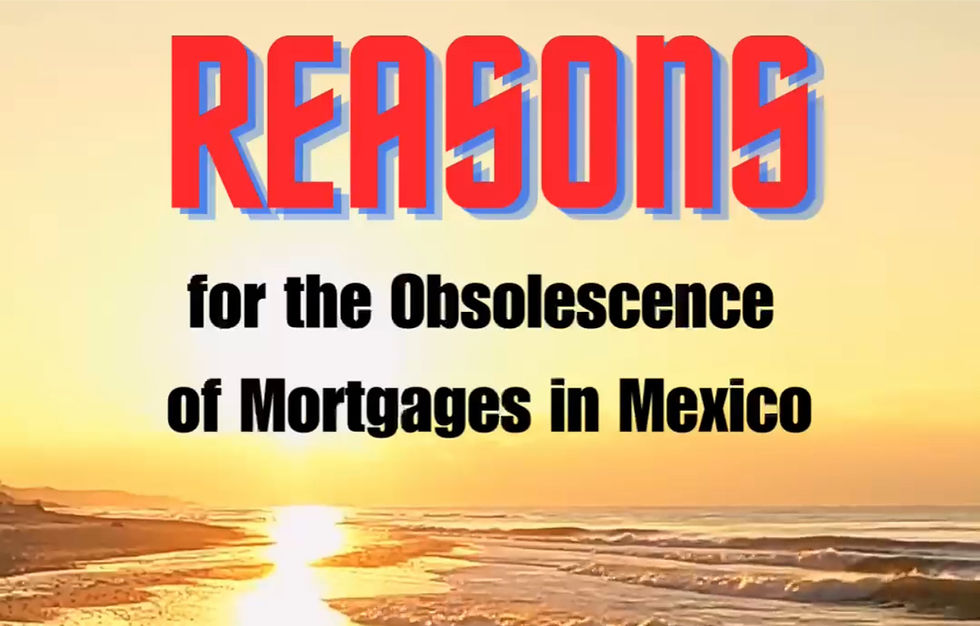
…in case you were wondering
- William Hutt

- Jul 7, 2024
- 2 min read
Reasons for the Obsolescence of Mortgages in Mexico
1. High Interest Rates: Mortgages in Mexico often come with high-interest rates, making them less attractive to potential borrowers. Interest rates can be significantly higher than those found in the US or Canada.
2. Strict Lending Criteria: Mexican banks typically have stringent lending criteria, requiring substantial down payments (often 20-30% or more), proof of stable income, and a good credit history. These criteria can be difficult for many people to meet.
3. Economic Stability: Historically, economic instability and inflation have led to a cautious approach from both lenders and borrowers. High inflation rates in the past have made long-term borrowing risky and expensive.
4. Cultural Preferences: There is a cultural preference for owning property outright rather than taking on debt. Many Mexicans prefer to save up and purchase property with cash or through other means.
5. Underdeveloped Mortgage Market: The mortgage market in Mexico is less developed compared to countries like the US. There is a lack of variety in mortgage products and fewer financial institutions offering competitive mortgage rates.
Positive Impacts on Mexico
1. Reduced Household Debt: With fewer people taking out mortgages, household debt levels are generally lower. This can lead to greater financial stability for families and less vulnerability to economic downturns.
2. Economic Stability: Lower levels of personal debt contribute to overall economic stability. The economy is less likely to be affected by mortgage crises similar to those seen in other countries.
3. Increased Savings: People tend to save more in order to purchase property outright. Higher savings rates can lead to increased investment and economic growth.
4. Property Values: The lack of widespread mortgage borrowing can help stabilize property values, reducing the risk of housing bubbles.
Cost of Mortgages in Mexico
- Interest Rates: Mortgage interest rates in Mexico can range from 8% to 15% or higher, depending on the lender and the borrower's creditworthiness.
- Down Payments: Large down payments are typically required, often around 20-30% of the property's value.
- Fees: There are additional costs such as origination fees, appraisal fees, and insurance, which can add significantly to the overall cost of obtaining a mortgage.
Alternatives to Mortgages
1. Savings:
Many Mexicans prefer to save up and buy property with cash. This avoids the high interest and fees associated with mortgages.
2. Infonavit Loans:
The Institute of the National Housing Fund for Workers (Infonavit) offers loans to workers who contribute to the fund. These loans often have more favorable terms than traditional bank mortgages.
3. Shared Family Purchases:
It's common for families to pool resources to purchase property collectively. This reduces the individual financial burden and can make property ownership more accessible.
4. Developer Financing:
Some property developers offer financing directly to buyers, which can be more flexible and have different terms compared to traditional mortgages.
While the mortgage market in Mexico is relatively underdeveloped and comes with high costs, the preference for buying property outright or using alternative financing methods has contributed to financial stability and reduced household debt levels. This cultural and economic approach to property ownership supports economic stability and growth in Mexico.
Will Hutt
Coldwell Banker La Costa
@BeachPleasePVR on Instagram & TikTok
“Trade your stress for sunsets, your worries for waves - make Puerto Vallarta your new home”






Comments